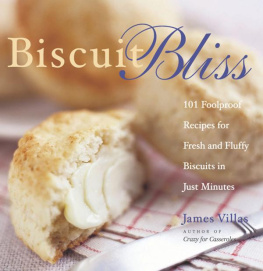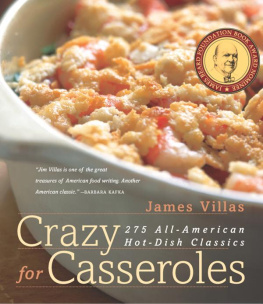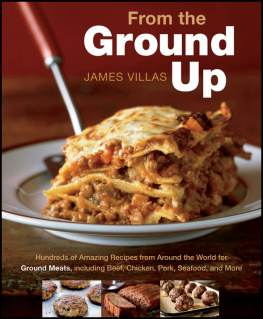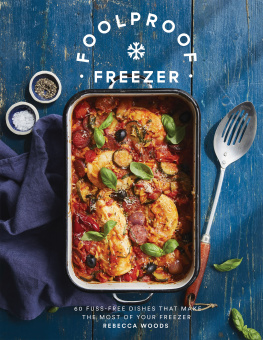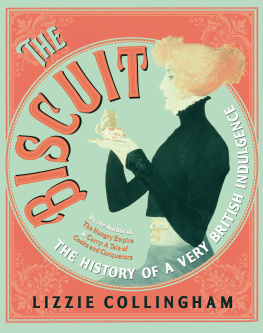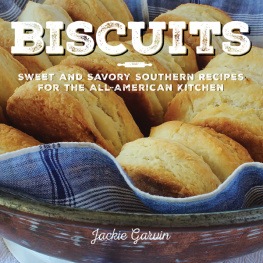
Sam's Cloud Biscuits

Smoked Salmon and Dill Biscuits with Salmon Caviar
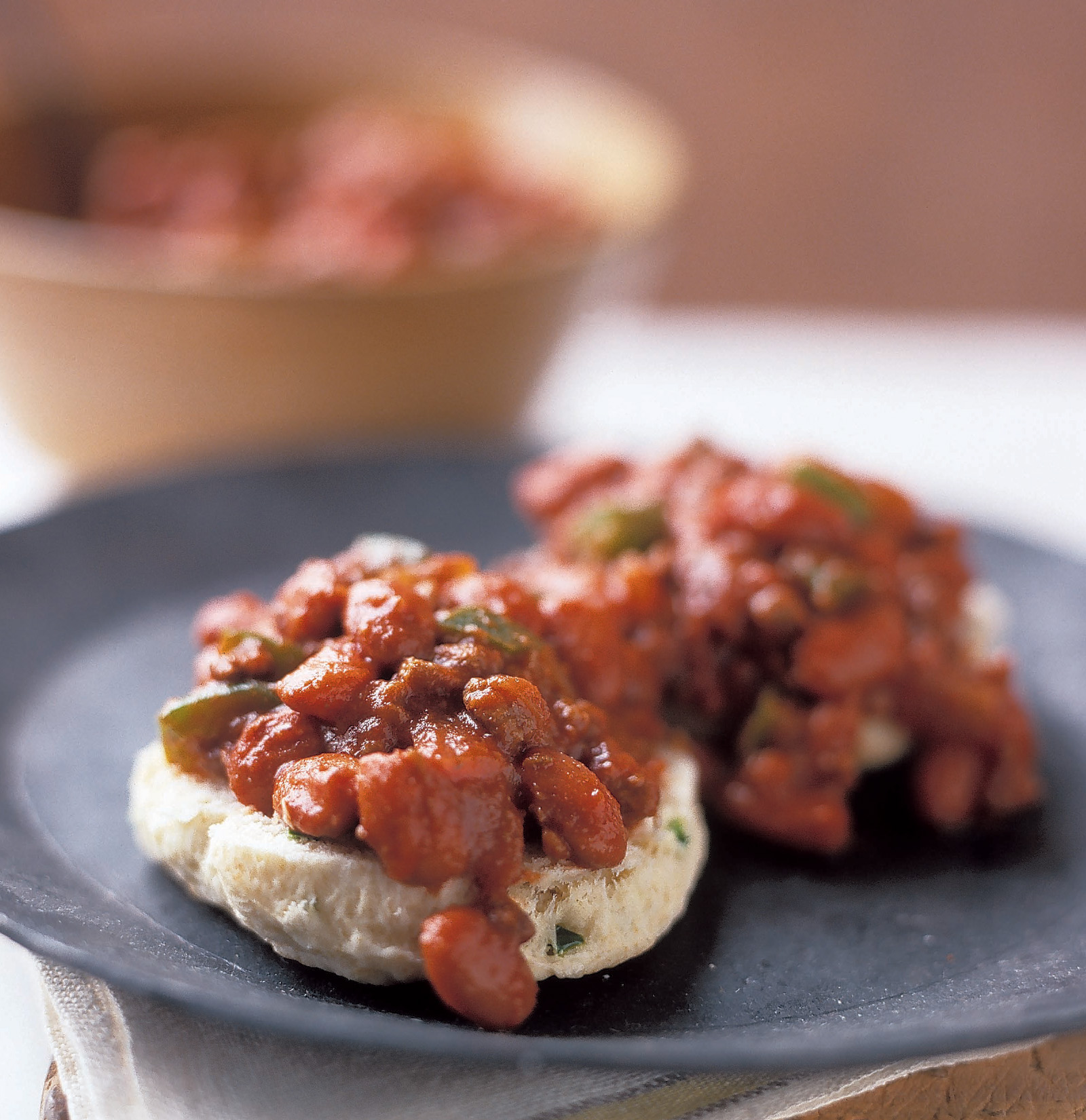
Texas Chili on Jalapeo Buttermilk Biscuits
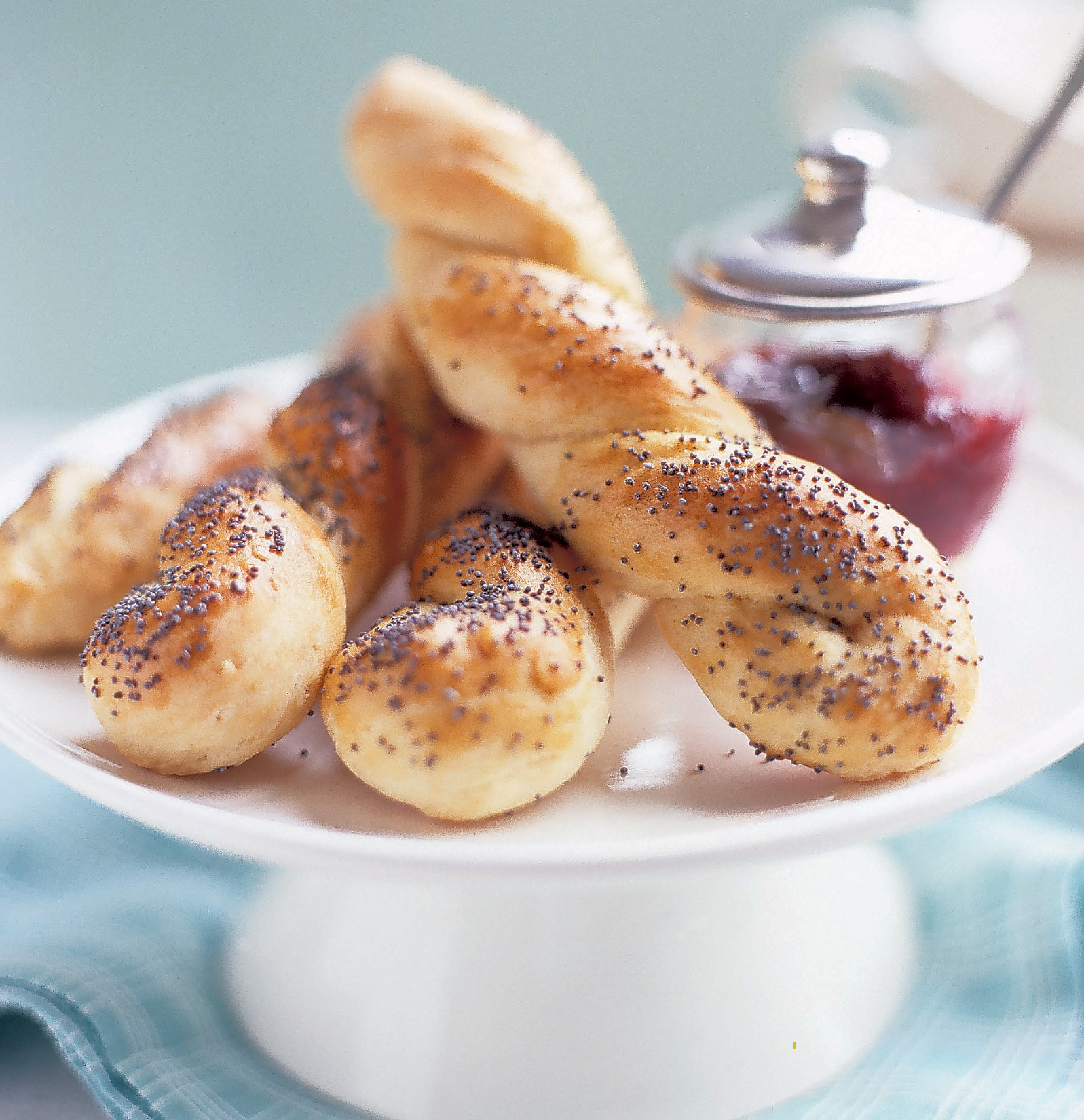
Poppy Seed-Sour Cream Biscuit Twists
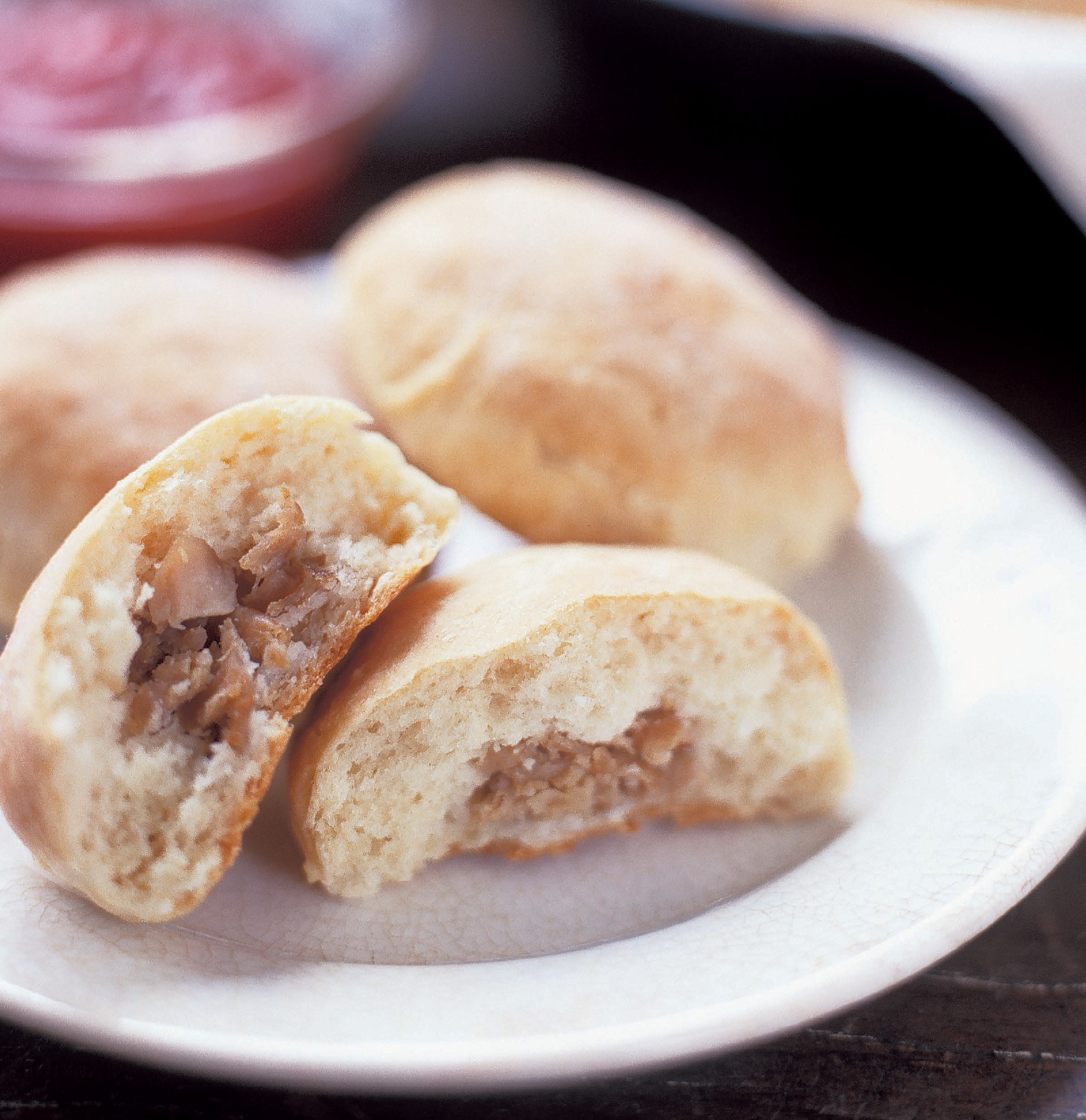
Maine Clam Biscuits
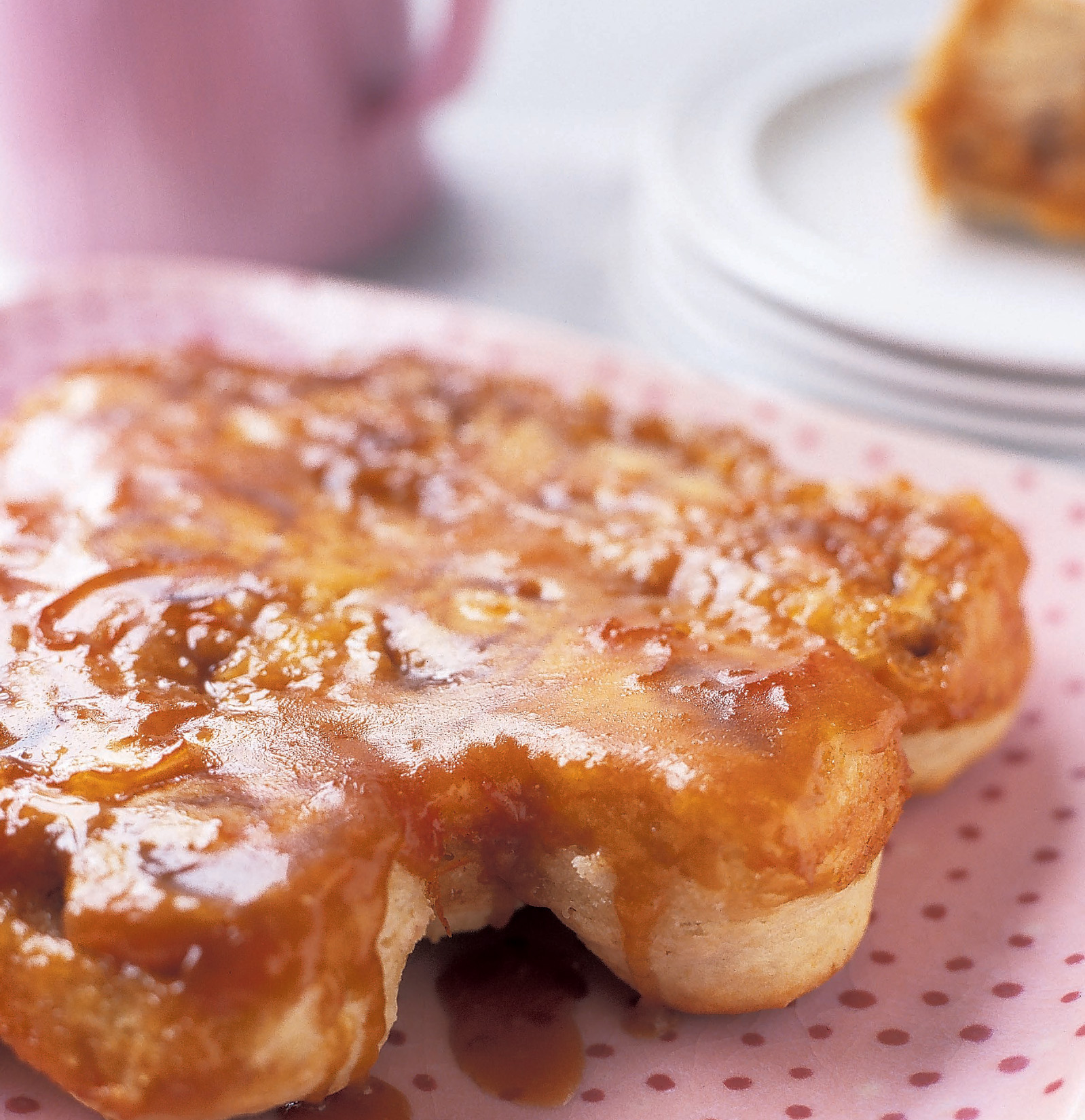
Jean's Sticky Biscuits
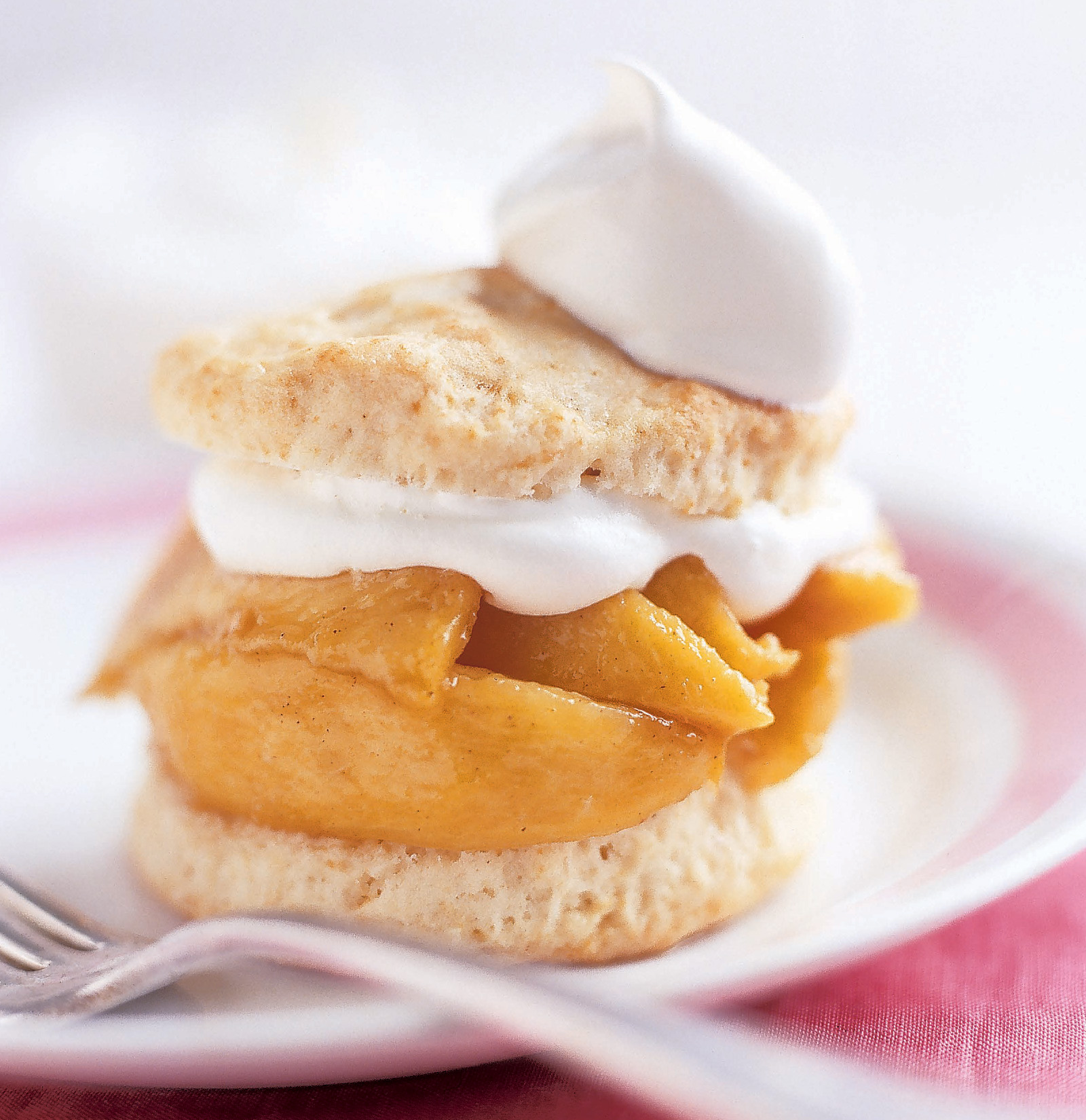
Spiced Peach Shortcake
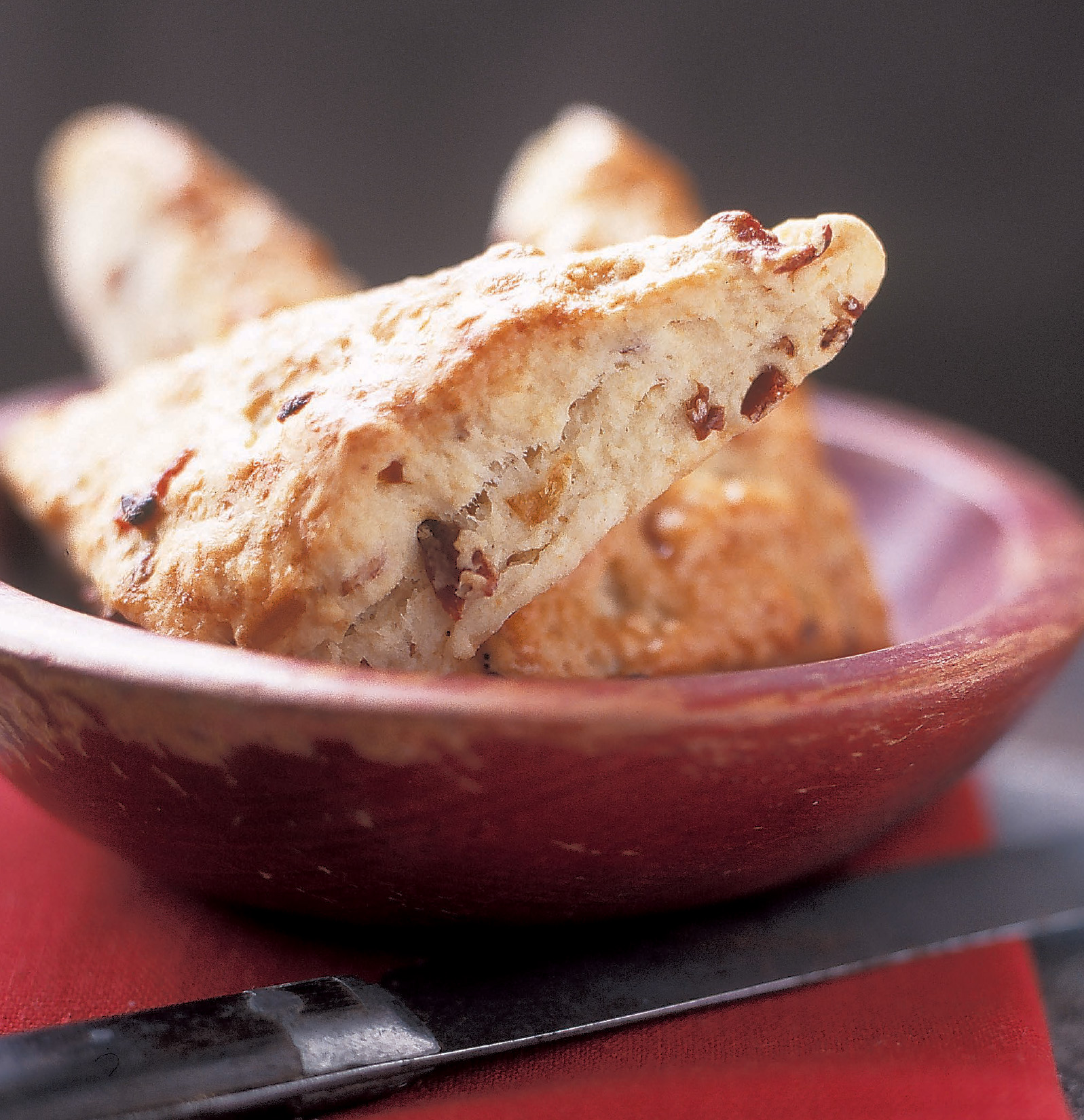
Yankee Bacon and Onion Scones
The Harvard Common Press
535 Albany Street
Boston, Massachusetts 02118
www.harvardcommonpress.com
2004 by James Villas
Photographs 2004 by Alexandra Grablewski
All rights reserved. No part of this publication may be reproduced or
transmitted in any form or by any means, electronic or mechanical,
including photocopying, recording, or any information storage or
retrieval system, without permission in writing from the publisher.
Printed in the United States of America
Library of Congress Cataloging-in-Publication Data
Villas, James
Biscuit bliss : 101 foolproof recipes for fresh and fluffy biscuits in
just minutes / James Villas. p. cm.
Includes index.
ISBN 1-55832-222-1 (hc : alk. paper)ISBN 1-55832-223-X
(pb : alk. paper)
1. Biscuits. I. Title.
TX770.B55.V55 2004
641.9'15dc22
2003019438
Special bulk-order discounts are available on this and other Harvard
Common Press books. Companies and organizations may purchase
books for premiums or resale, or may arrange a custom edition, by
contacting the Marketing Director at the address above.
10 9 8 7 6 5 4 3 2 1
Cover and interior design by Night & Day Design
Photographs by Alexandra Grablewski
Food styling by Megan Fawn Schlow
For Mary "Mac" Mahone
a gracious Southern lady,
an amazing cook, and a generous,
beloved friend
Acknowledgements
Having been weaned on biscuits in the South, I wish I could say that this book was my idea. The credit, however, must go to my longtime Yankee editor at The Harvard Common Press, Pam Hoenig, whose passion for baking and eating biscuits is surpassed only by her uncanny ability to catch every single mistake in my recipes.
My sincere appreciation to Linda Carman at Martha White Kitchens in Nashville, Tennessee, the quintessential "biscuit lady" whose help has been invaluable; and without regular shipments of superior Southern flour from the folks at White Lily in Knoxville, Tennessee, testing so many biscuit recipes wouldn't have been half as successful. For special advice, ideas, tips, and recipes, I also thank Shirley Corriher, Jean Anderson, and Damon Lee Fowler. Equally cooperative have been the enthusiasts at City Tavern in Philadelphia, Crooks Corner in Chapel Hill, North Carolina, Hay Day Market in Westport, Connecticut, and Chanterelle restaurant in Manhattan, not to mention the dozens of faded names and faces from Roanoke, Virginia, to Green Bay, Wisconsin, to Monterey, California, who over the many years, have shared recipes and cooking techniques and demonstrated what a regional phenomenon biscuit and scone making really is. Finally a big peck on the cheek to the greatest biscuit expert of them all, namely my Southern mother, Martha Pearl Villas, who still says I don't know a thing about making perfect biscuits.
Introduction
The Romance of Biscuits
As if it were just yesterday, I can still see my great-aunt in North Carolina making a fresh batch of buttermilk biscuits for breakfast. On the counter was a big wooden bowl into which she'd dumped an entire five-pound sack of flour a day or so earlier and kept covered with a towel. When she was ready Aunt Toots would simply make a well in the center with her fingers, add unmeasured quantities of baking powder, baking soda, and salt to the indention, whish it all around with just the right eyeful of flour collected from the sides of the bowl, and quickly rub small scoops of lard into the mixture till it was mealy. Next, she'd add just enough buttermilk from a jug to make a sticky dough, pat out perfect rounds with her floured hands, arrange them almost touching one another on a heavy, slightly battered baking sheet, and stick them in the hot oven.
She'd then re-cover the utterly dry remaining flour intended for more biscuits at suppertime and proceed to fry bacon while the biscuits were baking. The entire mixing and patting procedure took maybe five minutes. Aunt Toots never once looked at a clock or even peeked in the oven, and when she knew instinctively the biscuits were ready, she'd simply hand me a dish cloth while she stirred a pot of grits and direct, "Take 'em out honeynow!" As always, the biscuits were high and fluffy, the tops golden brown and slightly knobby, and, when I broke one open to butter the halves, the soft, moist inside released a tangy aroma that almost made me salivate. The flavor was indescribable.
Since those childhood days, I've watched my own mother turn out thousands of amazing biscuits, I've made countless batches myself, and sampled every style imaginable from coast to coast, but, for whatever sentimental or psychological reasons, I don't think I've ever tasted biscuits quite like those flaky, sapid wonders that Aunt Toots concoctedand it's for sure I've never again seen anybody duplicate her amazing method of dealing so deftly with all that flour. Like most Southerners, of course, I've been obsessed with biscuits my entire life, a passion no doubt inherited from generations of family and relatives like Aunt Toots and one that serves as the major inspiration for this book. Since biscuits have been prepared and loved throughout America ever since the country was founded, I'm not about to insinuate that Rebels have a monopoly on the bread. But it is true that, historically and gastronomically, biscuits have been as much part of the South's cultural backbone as pork barbecue and fruit cobblers, and that just the idea of going two or three days without some form of biscuit is literally inconceivable to me when I'm home.
Biscuit Bonus
Always use vegetable shortening or lard to grease a baking sheet for biscuits. Butter tends to make them stick and the bottoms overbrown.
Southerners certainly didn't invent biscuits, but we do claim them atavistically as a major component of our natural birthright. Actually the term biscuit derives from the Latin bis ("twice") plus coctus ("cooked") and refers most likely to a crude Roman bread made in the first century A.D. During the Middle Ages, the English developed their first savory

